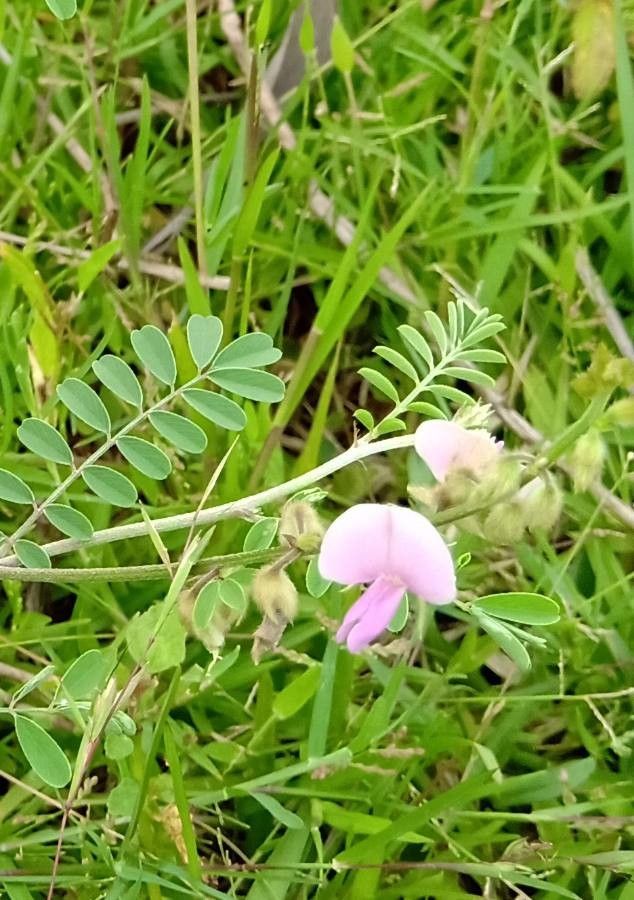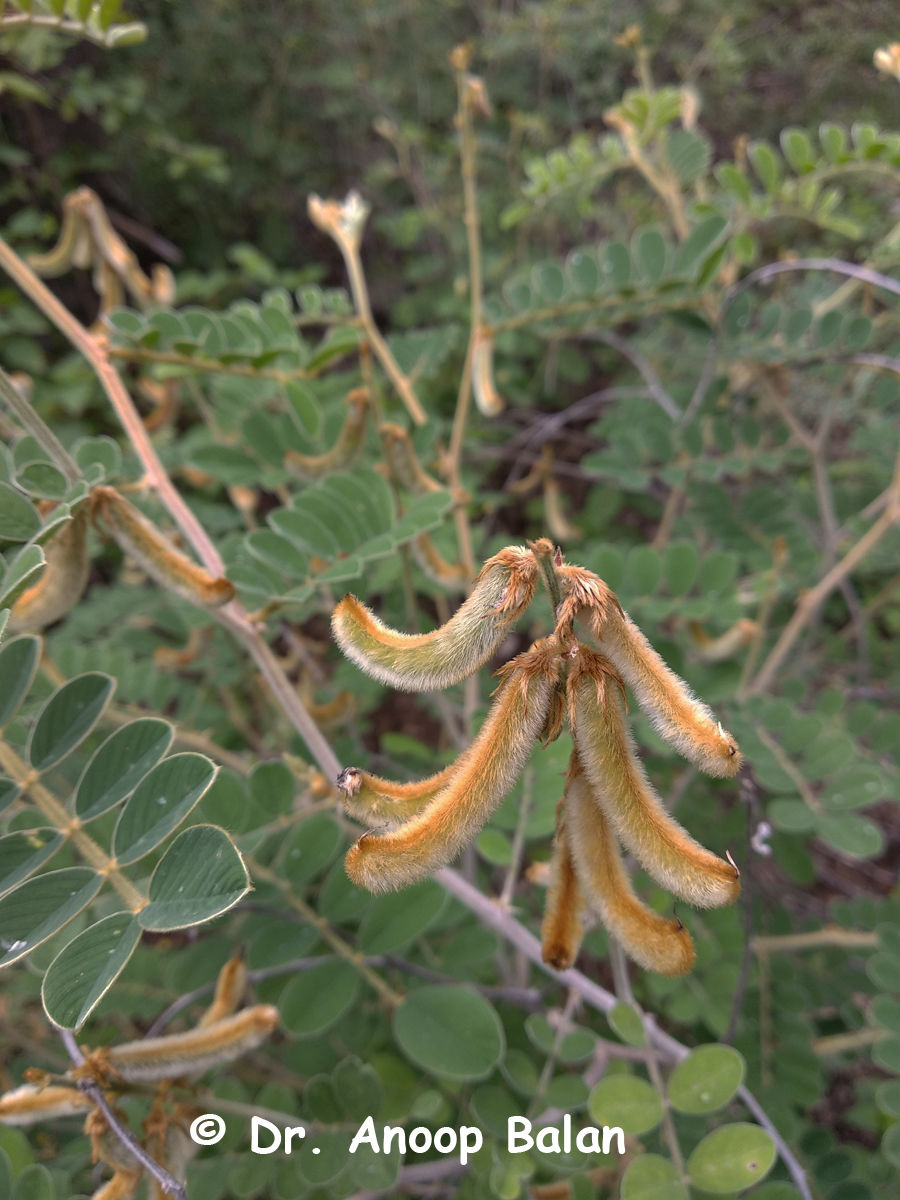Indian Indigo, Woolly Tephrosia
tephrosia villosa
Also known as: ["Wild Indigo","Catgut","Kasamarda"]
Overview
A deciduous shrub native to tropical and subtropical regions, known for its toxic properties and historical use in dye production.
Benefits & Perks
["drought tolerant","wildlife attractant (bees, butterflies, birds)"]
Botanical Classification
| Phylum: | Magnoliophyta |
| Class: | Magnoliopsida |
| Order: | Fabales |
| Family: | Fabaceae |
| Genus: | Tephrosia |
| Botanical Name: | Tephrosia villosa |
Plant Characteristics
Basic Information
- Category: Shrubs
- Suitable Location: outdoor garden in a sunny spot, or container with good drainage
- Suitable For:
- Is Weed: No
- Allergenicity: moderate
Environmental Needs
- Climate: {"temperatureRange":"10–35°C"}
- Hardiness: {"zones":"8–11"}
- Misting: rarely required, only if ambient humidity is very low
- Drainage: Fast-draining to prevent waterlogging.
- Soil Type: Well-draining, loamy soil with added organic matter.
Maintenance Level
- Maintenance Level: moderate
- Toughness Level: moderate
- Pruning Frequency: Annually in late winter or early spring before new growth begins.
- Pruning Intensity: Moderate; remove up to one-third of old growth if needed.
Care Details
Ideal Sunlight Coverage:
Full sun (6–8 hours/day); tolerates partial shade in intense heat.
Sunlight Tolerance Tips:
Acclimate gradually to intense sunlight; protect from harsh midday sun; adjust placement based on outdoor/indoor conditions.
Care Requirements
Care Difficulty
moderatemoderate
Sunlight
full sun to partial shade
Rotate plant for even light; use sheer curtains in intense sun; monitor for sunburn.
Watering
every 7–10 days during growing season, reduce in winter
Water thoroughly but infrequently; ensure proper drainage; adjust based on season and growth stage.
Soil
well-drained, sandy or loamy soil
pH: Slightly acidic to neutral (pH 6.0–7.0).
Ensure good drainage; avoid heavy clay; enrich with organic matter.
Temperature
Warm conditions (65–85°F/18–29°C); prefers stable temperatures; sensitive to frost.
Avoid drafts; maintain stable temperatures; protect from frost.
Fertilizing
every 4–6 weeks during active growth
Fertilize during active growth; reduce in dormancy; avoid over-fertilizing.
Propagation
Methods
Stem cuttings or seed; stem cuttings are more common for home growers.
Step-by-Step Propagation Guide
- Take a 4–6 inch cutting.
- Remove lower leaves.
- Apply rooting hormone.
- Plant in medium.
- Keep moist.
Best Time: Spring or early summer when the plant is actively growing.
Environment
Warm (70–75°F/21–24°C), high humidity, and indirect light.
Medium
Well-draining mix like perlite and peat moss or cactus mix.
Hormone
Recommended to promote root development.
Timeline
Roots develop in 3–6 weeks; establish in 2–3 months.
Tools Needed
Pruning shears, rooting hormone, small pots, well-draining medium.
Quick Tips
Use healthy parent stock; maintain humidity; avoid direct sun during rooting.
Pruning & Repotting
Pruning Guide
Method
Selective pruning of stems to shape the plant and improve air circulation.
Pruning Plan
Remove dead or overgrown stems to encourage bushier growth and better flowering.
Tools
Pruning shears, gloves, disinfectant.
Checklist
Sanitize tools; prune dead/damaged stems; shape the plant; clean up debris.
Repotting Guide
Best Season
Spring, before active growth starts.
Pot Size
One size larger pot (1–2 inches wider in diameter).
Method
Remove plant gently; trim roots if needed; place in new pot with fresh soil; water lightly.
Suggestions
Repot every 2–3 years or when roots fill the pot; beneficial for growth and flowering.
Checklist
Check root bound status; prepare new pot; trim roots; use fresh soil; water after repotting.
Advanced Care Tips
Watering Mastery
Watering Checklist
Check soil moisture; water deeply; ensure drainage; adjust for season.
How to Apply Water Properly
Water at the base of the plant, ensuring moisture reaches the root zone; avoid wetting foliage; allow excess water to drain away.
Watering Schedule Tips
Water deeply once the top inch of soil is dry; reduce frequency in winter to prevent root rot.
Soil Improvement
Add perlite or sand for drainage; incorporate compost for fertility.
Temperature Stress Management
Signs of Temperature Issues
Wilting, leaf drop, chlorosis, or stunted growth.
Cold Stress
Slows growth, causes leaf drop, and may lead to root damage in freezing conditions.
Solution: Move to a warmer location; insulate roots; avoid overwatering in cold.
Hot Stress
Leaf scorch, wilting, and reduced flowering in excessive heat.
Solution: Provide shade during peak heat; increase humidity; water deeply but infrequently.
Fertilizing Guide
Fertilizing Checklist
Check season; dilute fertilizer; apply to soil; avoid foliage contact.
Fertilizing Method
Use balanced liquid fertilizer diluted to half strength every 4–6 weeks during growing season; avoid fertilizing in winter.
Common Problems & Solutions
Toxicity Warning
Cats
ToxicCats are highly sensitive to the toxic compounds in Tephrosia villosa, which can cause severe neurological and respiratory distress. Rotenone is particularly dangerous for felines.
⚠️ Symptoms:
🌿 Toxic Parts:
⚡ Toxic If:
if eaten
Dogs
ToxicThe plant's toxic compounds, particularly rotenone, are harmful to dogs, affecting their nervous and respiratory systems. Ingestion can lead to severe poisoning and potentially fatal outcomes.
⚠️ Symptoms:
🌿 Toxic Parts:
⚡ Toxic If:
if eaten
Humans
ToxicTephrosia villosa contains rotenone and other toxic compounds that inhibit cellular respiration, leading to significant physiological effects. Ingestion can cause severe poisoning due to the disruption of mitochondrial function.
⚠️ Symptoms:
🌿 Toxic Parts:
⚡ Toxic If:
if eaten
Frequently Asked Questions
Q: Is Tephrosia villosa safe for pets?
A: No, it is toxic to dogs and cats.
Q: What is Tephrosia villosa used for?
A: Historically used for dye production and traditional medicine.
Q: How toxic is Tephrosia villosa to humans?
A: It is toxic if ingested, containing rotenone and other toxic compounds.
Quick Reference
| Family: | Fabaceae |
| Care: | moderate |
| Light: | full sun to partial shade |
| Water: | every 7–10 days during growi |
Get Expert Care Tips
Download the Plantious app for personalized care reminders and plant identification!
Google Play App Store







